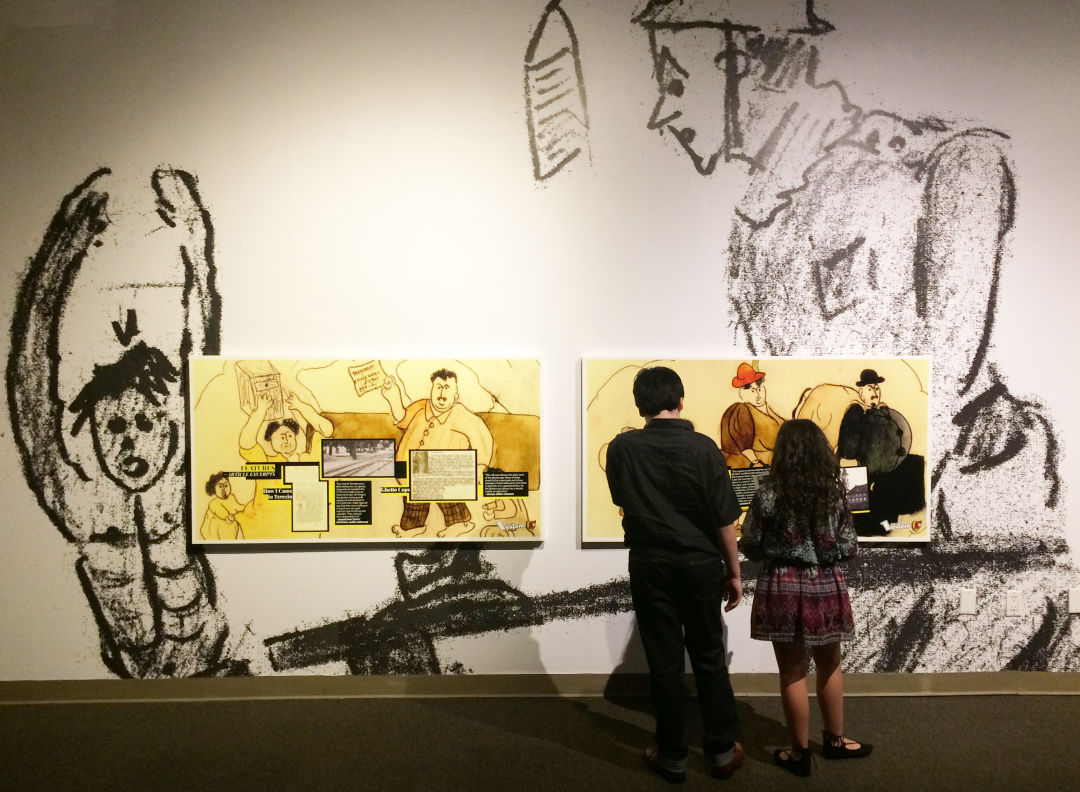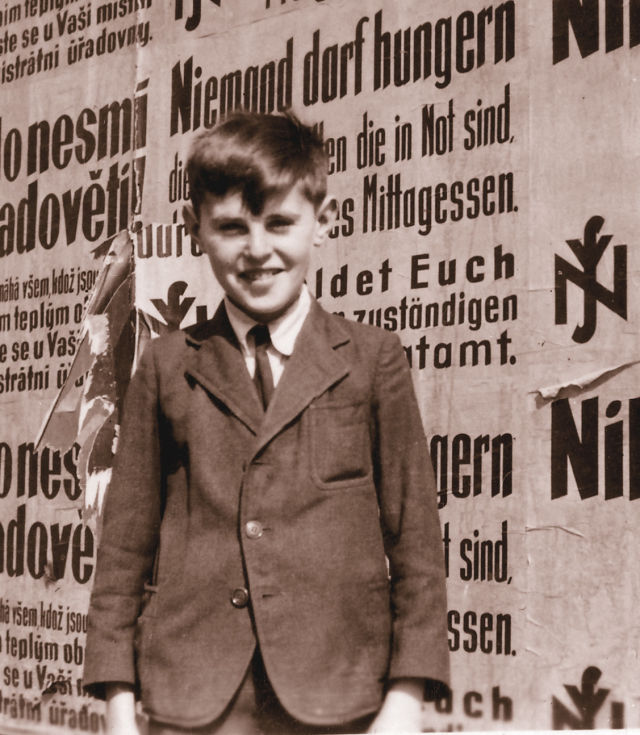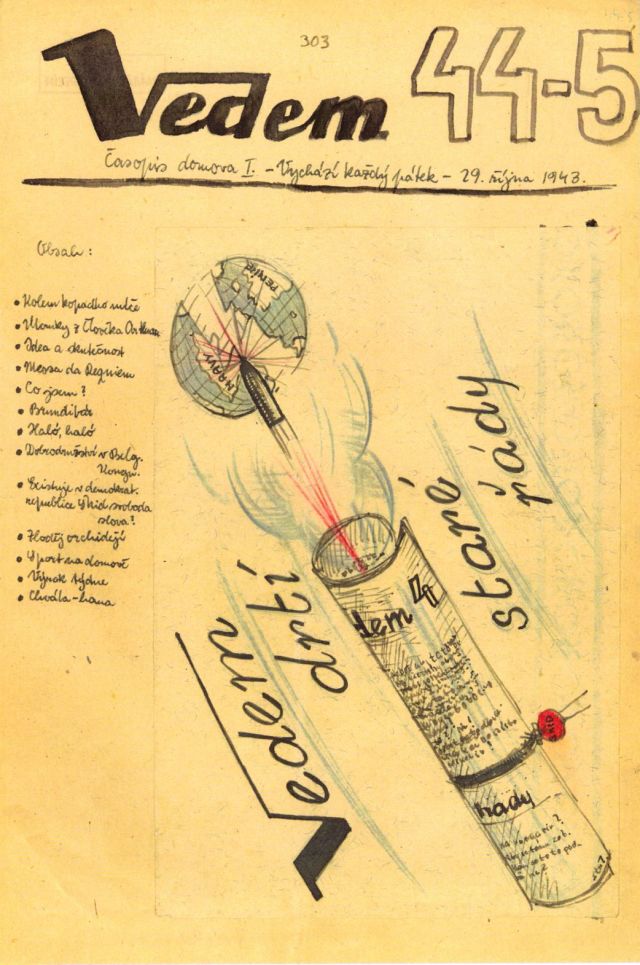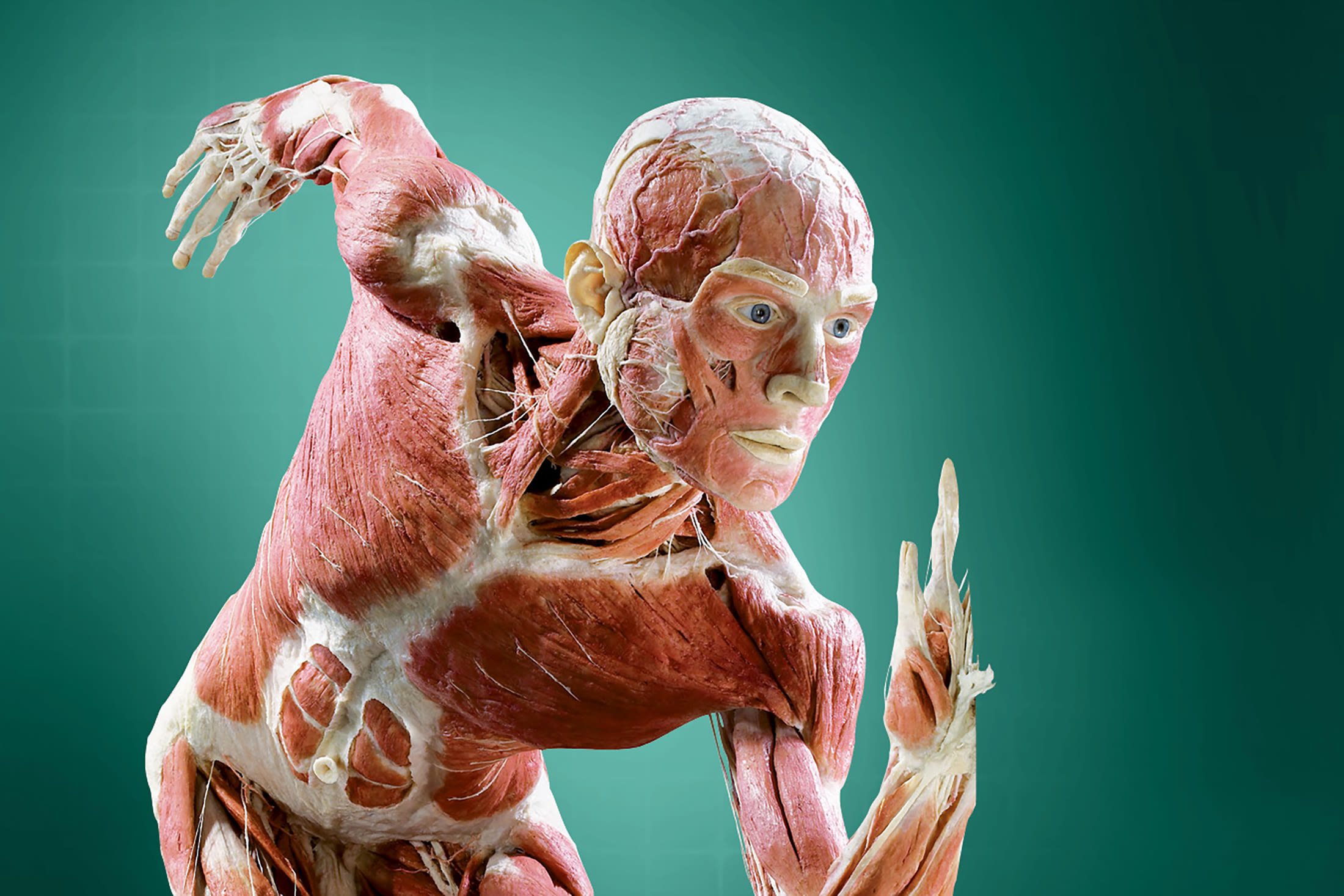See the Holocaust Zine that Captured Life in the Ghetto

Vedem Underground at the Holocaust Museum Houston earlier this year.
Image: Courtesy Rina Taraseiskey
In 1942, a group of teenage boys gathered in a converted schoolroom in a Nazi-occupied ghetto to create a secret underground magazine called Vedem. That magazine is the subject of a new exhibit at the Czech Center Museum Houston honoring the spirit of rebellion and creative activism by the magazine's contributors.
Vedem, which means "In the Lead" in Czech, was founded by 14-year-old Petr Ginz, a child prodigy from Prague who was relocated to Terezin, a ghetto and de facto concentration camp just outside the Czech capital. Terezin was a former army town that essentially became a holding center for captured Jews. More than 150,000 people were sent there, including 15,000 children. 88,000 of those people were later sent to Auschwitz.

Petr Ginz
Image: Courtesy Rina Taraseiskey
"They let the Jews create almost like a city council to manage the ghetto," says Rina Taraseiskey, co-creator of the exhibit with her husband Danny King. "All the musicians and artists, they allowed to have cultural events during their stay there, to just sort of keep them quiet. They did everything to keep them from resisting. They thought that they kept them complacent."
All the while, the boys were documenting behind-the-scenes life at Terezin. From 1942 to 1944, the boys created 83 issues of Vedem—more than 800 pages. Articles included general reports on life in the ghetto, as well as humor and hand-drawn illustrations. One of the most notable articles was written by Sidney Taussig, a boy who was assigned to transport bodies to the crematorium.
"They only had enough supplies for one copy a week," Taraseiskey says. "They would steal paper from the lithography department and other places. They first found a typewriter, and then it ran out, and so they started handwriting."
Because they could not duplicate issues, the boys would host readings each Friday after curfew.
"That was their coming together in a spoken word type of setting. Some of the well-known artists and writers would sneak into their room and listen, and there would be a boy standing guard to make sure that none of the guards would see what they were doing," Taraseiskey says.
In 1943, upon word from the Danish Government that the Jews were being mistreated by the Nazis, the Red Cross announced a planned visit to Terezin. The camp underwent an extensive "beautification" program to cover up the true condition of life.

A Vedem Magazine cover.
"The better part of the camp was actually converted into a model ghetto," Taraseiskey said. "They shipped a lot of people to Auschwitz because it was so overcrowded, and then put on all these cultural events. At the end of the day, they used the artists and musicians to create this show camp."
"And the kids were involved in that too. The kids that were writing the magazine had criticized what was going on and also had documented what was going on before and during the Red Cross visit."
The ruse apparently worked. After the Red Cross left, transports to Auschwitz resumed. Eventually, every boy involved with Vedem but one, Sidney Taussig, was sent to the concentration camp.
With the help of his blacksmith father, Taussig built a metal box in which he stashed the issues of Vedem, along with 120 paintings made by Petr Ginz, and buried them in Terezin. After he was liberated, he dug it up and he took it back with him to Prague. The manuscripts now reside in the Pamatník-Terezin Museum, which has digitized and restored them.
Though the exhibit was previously on view at the Holocaust Museum Houston, The Czech Museum is the first museum that is not related to the Holocaust or Jewish culture to show Vedem Underground. Its curators are also working on a documentary about the magazine. The exhibit is already open, and a grand opening reception will take place on Sept. 9 at the Czech Center. Through the exhibit's run, the museum will also be offering workshops for kids on zine-making and other forms of creative activism.
"There's power in the page," Taraseiskey says, nodding to the current political climate. "There's power in what you write. There's power in what you draw. The words on the page have an impact."
Vedem Underground, thru Nov. 30. Czech Center Museum Houston, 4920 San Jacinto St. 713-528-2060. More info here.




